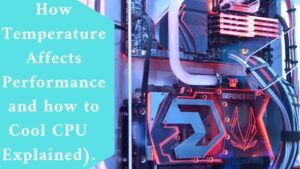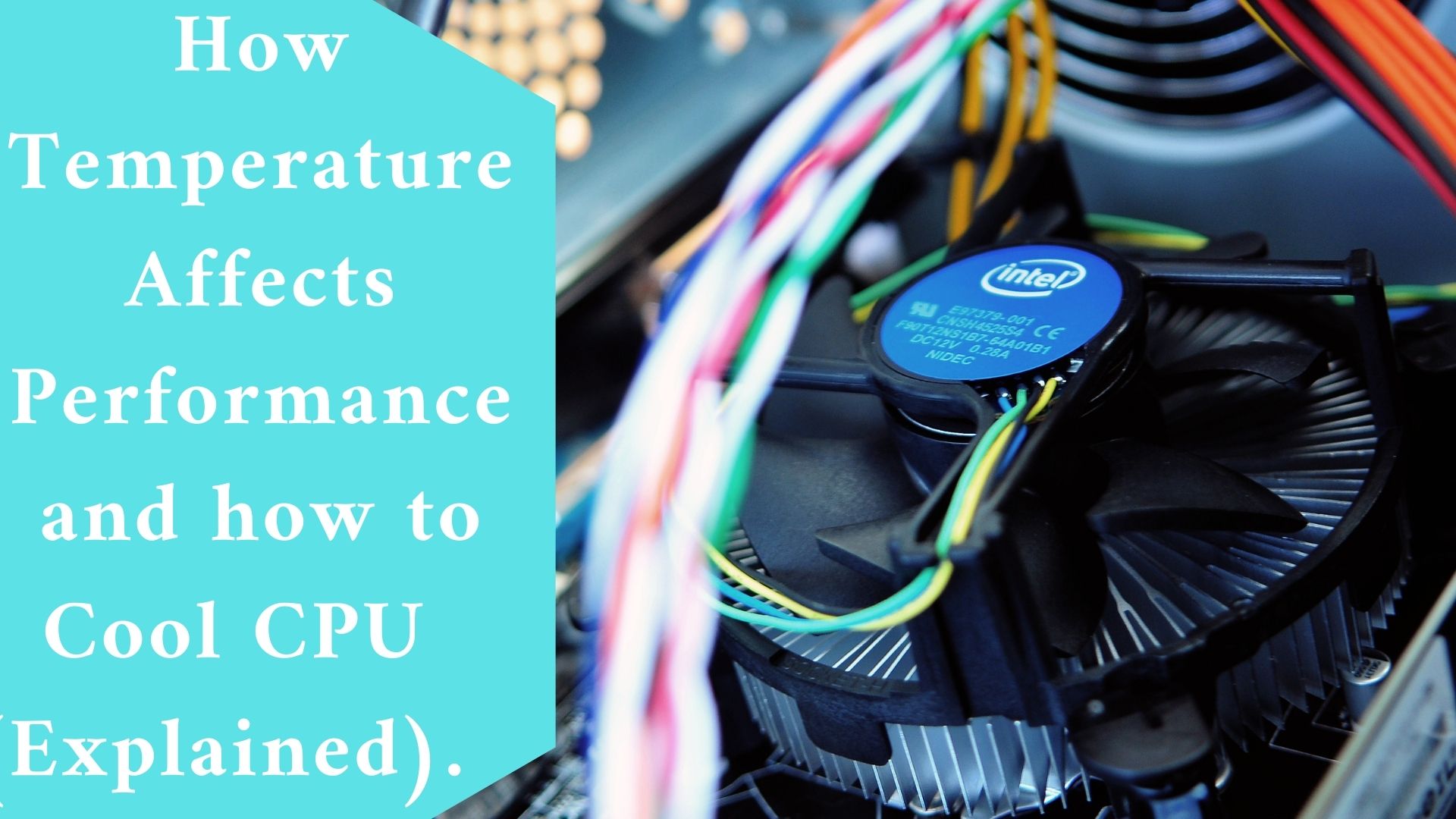Because of the frequent usage of our PCs, a special CPU cooling system is required because heating is typically an unavoidable side effect of computer operation.
Although there are several techniques to keep your CPU cool, air or liquid cooling is the most common and efficient.
From desktops to portable systems, air or liquid coolers come with a wide range of functionality for practically any application.
It is significantly simpler to access temperature displays when a CPU cooler has them. Laptops have their air cooling system, though, which is more advanced and made specifically for a smaller chassis.
For optimal PC performance, it’s crucial to maintain the average temperature of all other components while the CPU is being cooled.
So, as you participate in many workplace meetings or play your favorite action-packed games, maintain a comfortable temperature with a noise-free cooling system.
Building a PC requires careful consideration of PC cooling.
Many PC builders already know this, but it might be helpful to explore why cooling is an essential component of a build and to apply these principles to new builds.
The fundamentals are straightforward: intense workloads, such as gaming, cause technology to produce heat.
Performance problems may be caused by overheated components. An optimum configuration allows you to get the best performance out of your system and keeps all of its components cool enough.
How Temperature Affects Performance
- Extra Hardware
- How to Keep Processors Cool
Although heat is a natural result of operating computer hardware, too much of it can slow down the entire system.
For instance, a mechanism will activate if the CPU temperature is too high, reducing performance to protect the processor.
“Intel® CPUs have highly powerful thermal management features that immediately modify operating frequencies to decrease power when the system cooling solution is insufficient,” says Mark Gallina, System Thermal & Mechanical Architect at Intel.
This safety feature, also known as dynamic frequency scaling, is beneficial in that it guards your processor against potential harm.
When activated, this protection does, however, have a performance cost. Keeping the CPU cool enough to prevent the process from activating in the first place is a preferable solution.
The most recent Intel® CoreTM CPUs are found in many laptops, and they have a capability called Dynamic Tuning.
This procedure makes use of AI to anticipate workloads, and it can adjust CPU performance as necessary to stay up with those workflows.
The machine handles everything automatically; the operator is not required to make any manual adjustments.
How to Keep Processors Cool
Mineral oil and passive cooling are just two of the various methods for keeping a CPU cool, but air or liquid CPU coolers are by far the most common options.
From desktops to portable systems, these coolers offer a wide range of functions and possibilities.
Since they have smaller chassis, laptops typically require complex air conditioning systems that are not intended to be modified or replaced.
Any cooling solution must also include properly applied thermal paste because it serves as a link between the CPU and the cooling plate of the CPU cooler.
Not only the CPU needs to be managed in terms of temperature. Another important component of a gaming computer is the GPU (graphics processing unit), which also requires sufficient cooling.
Pre-installed GPU cooling options typically include fans mounted in a shroud that encloses the graphics processor.
Advanced builders who don’t mind removing the graphics card to access aftermarket cooling alternatives can also use liquid cooling blocks and bespoke air coolers.
The temperature of the GPU and CPU should be monitored first because they are the main processing units in a gaming computer. But these shouldn’t be the only factors taken into account.
Extra Hardware
Almost every device inside a computer that uses electricity generates heat while it is in use. Most already have some sort of built-in cooling system.
Power supplies typically feature a fan made specifically for this purpose, and RAM typically comes with metal heatsinks made to dissipate heat.
Even motherboards have heatsinks for components that become warm, and more recent models occasionally have heat shields for M.2 storage to avoid potential delay brought on by overheating.
But only half the battle is won when heat is moved away from a component.
The ambient temperature can quickly increase if all the components are concentrating their heat in a tiny space, like the interior of a computer case.
The hot air might cause the system to overheat if the casing is not adequately vented, which could affect performance.
CPU Cooler Benefits
- It maintains your system operational
- Defends the processor against potential harm
- Keeps your GPU’s performance at a high level.
- Installation simplicity
-
It maintains your system operational.
- CPU coolers are the ideal way to dissipate the heat generated by the system and ensure that you get the maximum performance out of your PC.
- They don’t just preserve your system from overheating; they also increase its productivity by reducing hiccups and buffering.
- Since there are various cooling fans available, it’s critical to choose your CPU carefully based on your demands.
- Many cooling fans are compatible with different Intel CPU socket types. Additionally, with its copper heat pipes and efficient airflow, coolers like the Low Profile Heat Pipe CPU cooler for AMD socket CPU cooling offer optimal heat transfer efficiency.
-
Defends the processor against potential harm
- The cooling fans’ safety features are useful in preventing any damage from overheating your computer.
- One crucial component of the system is the CPU. As a result, it rises to the top of the solution.
- To ensure that the entire processor receives cooling, customers can choose individual components to manage temperatures, such as voltage, hard drives, and visual cards.
- The CPU Cooler for AMD (RYZENmagical )’s air cooler is incredibly portable and compatible with a variety of fans.
- This cooler is the ideal addition to your PC because it has a copper-aluminum coating and a low-noise adaptor.

-
Keeps your GPU’s performance at a high level.
- Without a doubt, the most crucial element is CPU upkeep. On the other hand, we cannot discount the fact that the cooling system also heavily relies on the GPU (graphics processing unit).
- The risk of quickly overheating in gaming PCs is higher, which could result in damage.
- Although pre-installed, GPU cooling solutions can also be custom-made if necessary for your gaming PC to run more efficiently.
-
Installation simplicity
- These fans, whether they are arctic CPU coolers or AMD CPU coolers, are simple to install and take little time to operate.
- For instance, only narrow ILM mounting is supported by the Dynatron CPU cooling server from Intel.
Final thought
- When building your system, proper cooling necessitates some planning, but if you adhere to the above advice, it need not be challenging.
- An appropriate cooling solution should be created to complement the particular hardware configuration in the system to maintain each component in the system at its ideal temperature.
- Planning your PC cooling carefully is not only a good idea. Additionally, it’s crucial to get the maximum performance out of your build and maybe lengthen the life of your components.

